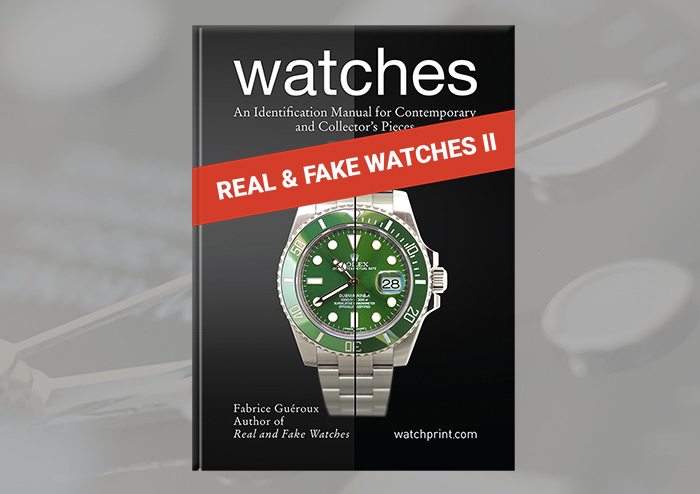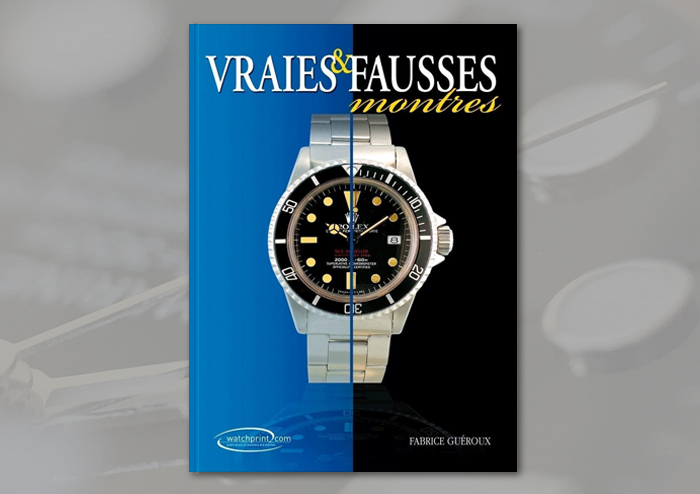Faites expertisez
votre montre et valorisez à 100%
Expert en horlogerie indépendant, j’interviens depuis plus de quinze ans en France et à l’international pour des expertises de montres de collection et montres de luxe, dans un cadre strictement confidentiel.
Mes ouvrages sur l'authentification

Vraies et fausses montres IV
Par Fabrice Gueroux
La version augmentée 2025. Véritable guide, cette nouvelle édition affine le regard du lecteur dans l’observation des différences qu’il peut y avoir entre une contrefaçon et une montre originale. C’est au travers d’une analyse minutieuse que l’auteur met en évidence les finitions horlogères et la qualité de réalisation des montres haut de gamme. Une documentation comprenant plus de 300 photos et illustrations détaillées permettant de découvrir comment seules les finitions et la qualité de réalisation des montres manufacturées marquent la disparité entre une vraie et une fausse montre.

Vraies et fausses montres III
Anglais uniquement • Par Fabrice Gueroux
Un guide complet pour identifier les fausses montres. L’achat d’une montre d’occasion peut être risqué. Les fausses montres sont légion sur Internet et les vendeurs peu scrupuleux utilisent de plus en plus ce marché pour vendre leurs produits frauduleux. Peu de sites de montres d’occasion font appel à de véritables experts et les achats se font de plus en plus aux risques et périls de l’acheteur. Comment distinguer une vraie montre d’une fausse ? Les réponses illustrées dans ce livre. 364 pages, 400 illustrations.

Vraies et fausses montres II
Français FNAC uniquement • Par Fabrice Gueroux
Ce livre – dédié à une grande partie des marques de montres les plus prestigieuses – offre à ses lecteurs les informations vitales sur la façon d’identifier une contrefaçon, de manière à ce que l’achat tant à un particulier, à un professionnel peu scrupuleux ou sur Internet (carrefour international de la vente de fausses montres…) ne se transforme en cauchemar ! Illustrées par plus de 500 photographies, les différences entre modèles originaux et contrefaçons sont exposées en détail (mécanismes, cadrans, bracelets, etc.).

